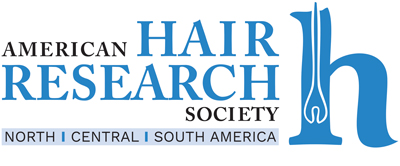Information AboutTrichotillomania
Trichotillomania -Dr. Janet Roberts
See FAQs at the bottom of the page.
Trichotillomania (a term coined in 1889) is the unfortunate name given to a hair loss condition characterized by the urge a person has to repeatedly pull out one's own hair. We have learned a lot about the many facets of trichotillomania in the last decade and how to help people who have it. People who have it are not "mad" or "crazy" as the term implies. One thing that we have learned through the renewed interest in research of trichotillomania is that it is a complicated problem. The environmental and emotional triggers are different in different people so that all of these must be identified and addressed to find successful treatment tailored to each individual person.
Trichotillomania is now felt to be a type of compulsive behavior pattern rather than a manifestation of a more serious mental disorder. Any hair-bearing areas can be affected. The affected areas are, in descending order of frequency, scalp, eyebrows and eyelashes, then areas remote from the head and neck.
There are two basic types of trichotillomania, one that is usually self-limiting and involves infants under the age of two in which males are more likely to be affected. It may be related to infantile stresses. More common is the second type, which often begins around or after puberty and is approximately nine times more frequent in females. In many cases, these are people who are very accomplished in school or in their profession, who on outward appearance would have no obvious reason to be pulling their hair. Often the family is unaware of the self-induced nature of the hair loss and the person may see many doctors before a correct diagnosis is made as the patient does not usually acknowledge the problem publicly. The condition tends to be chronic, lasting for years if not treated.
As more is learned about this disorder and the possible relationship to other types of compulsive habits (such as skin-picking and nail biting) or obsessive traits (such as having repetitive, intrusive thoughts), the prior stigmas attached to having trichotillomania have been lessened. More people today who experience this do seek treatment versus suffering alone and feeling that there can't be other people who have the same urges. In fact, trichotillomania is quite common, with estimates ranging as high as 4% of the population or 6-8 million affected people in the United States alone. In some families, there are members who may have hair-pulling behavior while other family members may have other symptoms of obsessive or compulsive behaviors. In other words, there may be a genetic component to trichotillomania.
The range of treatments available is increasing. There is no single treatment that is effective for all people. Often there are mental health practitioners in your community who specialize in the treatment of this and similar disorders. In some cities, there are support groups dedicated to mutual emotional support and sharing of successful strategies of treatment.
With the recent progress in understanding that the cause of trichotillomania, and other possibly related obsessive-compulsive disorders, may be a biochemical abnormality in the brain, newer treatments with medications that treat this abnormality may be of some help. Possible benefit may be obtained with classes of medications called serotonin reuptake inhibitors (SRI) as well as other medications. Other treatment approaches help the individual recognize what triggers the urge to have pulling episodes and learn methods of modifying this behavior. The trigger may be due to over-stimulation or under stimulation of the nervous system. Experts agree that a combination approach, including behavioral, biologic and self-awareness therapy, is usually the most successful in allowing individuals to achieve long-term control of this problem.
References:
Trichotillomania Frequently Asked Questions:
The following are frequently asked questions on trichotillomania. The information provided is not meant to be a substitute for the information obtained at an evaluation and by discussion with a physician but merely to encourage understanding of this condition. No questions regarding individual scenarios will be answered by the AHRS. No changes in treatment should be undertaken by a patient without discussion first with the patient's physician.
